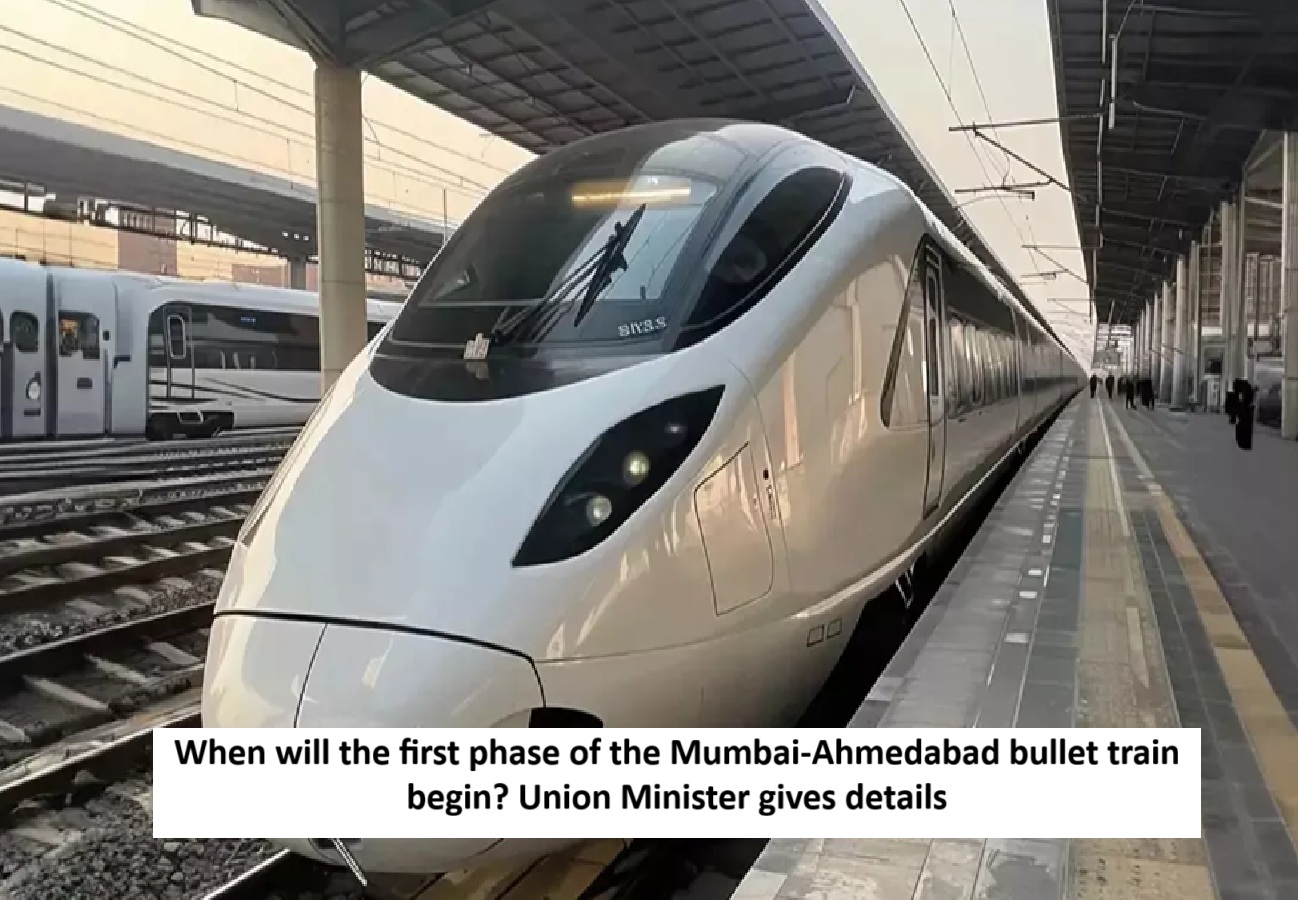
News Topical, Digital Desk : Railway Minister Ashwini Vaishnav said the Mumbai-Ahmedabad bullet train project will have a similar impact on India's economy as the introduction of bullet trains in Japan 60 years ago. He made the remarks on Saturday after the completion of the 4.88-km tunnel between Shilphata and Ghansole.
The Railway Minister said that just as Japan's first bullet train boosted the economy of the entire country by connecting Tokyo, Nagoya and Osaka, similarly in India this project will create a new economic corridor connecting Anand, Ahmedabad, Vadodara, Surat, Vapi and Mumbai.
Bullet train will have these benefits
He stated that this train will save time, boost trade, and facilitate the exchange of knowledge and technology. The benefits to the country's economy will far exceed the initial investment. Ashwini Vaishnav stated that the first bullet train journey will begin in December 2027 on the Surat-Bilimora section.
It will reach Thane in 2028 and connect to the Bandra-Kurla Complex by 2029. The journey from Mumbai to Ahmedabad currently takes 9 hours on Google Maps, but the bullet train will take just 2 hours and 7 minutes.
The tunnel was constructed using the New Austrian Tunneling Method (NATM). It is a single-tube tunnel with tracks on both sides. Major technological achievements were achieved during its construction, including the use of 40-meter-long girders and single-tunnel technology. Japan has praised this innovation.
The general public will be able to travel
The Railway Minister stated that this train will be a medium-sized mode of transport, with fares remaining moderate. Passengers will not need to reserve tickets; they can simply arrive at the station and catch the train. During peak hours, a train will run every half hour, and in the future, a bullet train will be available every 10 minutes.
How much work was completed?
According to the National High Speed Rail Corporation (NHSRCL), 321 km of viaducts, 398 km of piers, 17 river bridges, and 9 steel structures have been constructed so far. Additionally, more than 2,000 overhead equipment has been installed, and 206 km of track has been laid. Now, work will be done on waterproofing, finishing, and installing equipment for the tunnel.
--Advertisement--

 Share
Share



